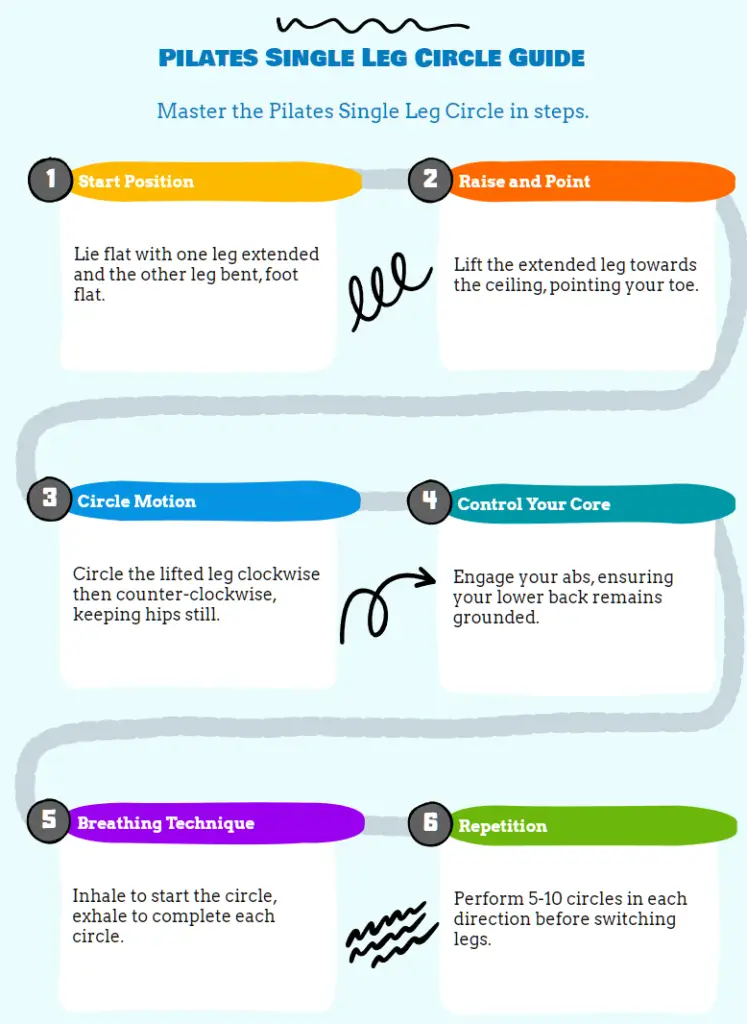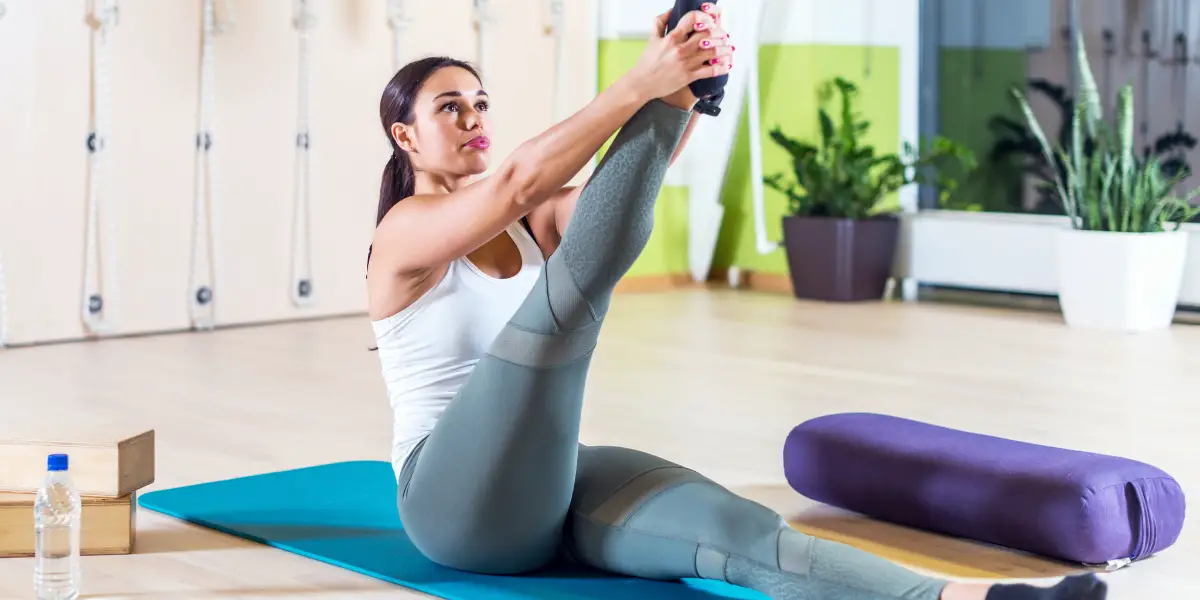When you’re working on your flexibility, the single leg circle can be a surprisingly simple yet significant solution. This dynamic drill doesn’t just dabble in stretching; it delves deep into enhancing your hip mobility.
As you circle one leg while keeping your core engaged, you’re not only loosening up your hip joint, but also lengthening your hamstrings and fortifying your quadriceps. It’s a comprehensive movement that helps you build a better range of motion.
The Single Leg Circle exercise in Pilates is very effective for improving flexibility in the hips and legs. It helps to stretch and strengthen the muscles in these areas, leading to increased flexibility over time.
If you’re consistent, you’ll notice an improvement in your flexibility over time. Plus, it’s a move you can master without any special equipment, making it an easy addition to your daily routine.
Whether you’re a dancer, an athlete, or just looking to move more freely, incorporating single leg circles into your workouts can make a meaningful difference.
Understanding Single Leg Circles
To perform a Single Leg Circle, you’ll trace a controlled circular motion with one leg, keeping your core engaged throughout the exercise.
This movement not only strengthens your quadriceps and hamstrings but also promotes healthy hip joints.
You’ll enhance your pelvic stability, which is crucial for maintaining balance and ensuring your hips function optimally. Remember, the precision of your movement is key. Avoid common pitfalls like lifting your pelvis or shoulders—stability here is non-negotiable.
Keep your abdominal muscles tight; they’re your support system, firing up the glutes and facilitating robust hip muscles. Whether you’re a seasoned athlete or a beginner, incorporating the Single Leg Circle into your routine can vastly improve your flexibility and core strength.
Give it a try and feel the difference!
Flexibility Benefits Explored
Your flexibility will significantly benefit from the Single Leg Circle as this exercise stretches the hip flexors and promotes a wider range of motion. When you perform this exercise consistently, you’ll notice a remarkable improvement in your ability to move more freely.
Here’s how the Single Leg Circle can enhance your flexibility:
- Improves Hip Flexibility: Regular practice loosens tight hip muscles, increasing suppleness.
- Alleviates Tight Hamstrings: The movement pattern helps elongate the hamstrings, reducing stiffness.
- Enhances Core Stability: Stronger core muscles support greater flexibility in your movements.
- Promotes Joint Health: A greater range of motion in the hip joint helps maintain joint function.
Stay precise with your movements and dedicated to your practice, and you’ll see those flexibility gains in no time.
Proper Technique Breakdown
Executing the single leg circle with meticulous form ensures you’re maximizing its potential for enhancing flexibility.

This exercise that requires precision, can be broken down into key steps for proper technique:
| Step | Description |
|---|---|
| 1. Setup | Lie on your back with bent knees, feet flat, and press your shoulders and arms into the mat. |
| 2. Leg Position | Extend one leg upward, turning it slightly out, and prepare to draw the circle. |
| 3. Movement | Inhale while circling the leg across the body, and exhale at the top of the circle. |
| 4. Stability | Keep your pelvis anchored, shoulders relaxed, chin down, and core engaged throughout. |
Repeat the Single Leg Circle 5-10 times per leg, gradually increasing the circle size, but always maintain control. Remember, consistency and attention to detail during the proper technique breakdown will greatly improve your flexibility.
Common Form Mistakes
While you’re aiming to improve flexibility with the single leg circle, watch out for these typical form errors that can reduce the exercise’s effectiveness:
- Lifting your pelvis or shoulders: Keep your shoulders and pelvis level to maintain core engagement.
- Allowing the non-working leg to move: This can destabilize your form. Keep the non-working leg bent and firmly planted on the ground.
- Overextending the circle size: Start small and increase the circle gradually as your core stability improves.
- Losing pelvis stability: It’s essential to keep your pelvis stable throughout the movement to ensure proper technique and prevent injury.
Enhancing Routine With Variations
Incorporating exercise band resistance or arm position variations, you’ll engage your core more intensely and add a fresh challenge to your single leg circle routine.
Using an exercise band not only enhances muscle engagement but also increases the benefits of this Pilates exercise. You’ll feel your core strength build as you resist the pull of the band while circling your leg.
Remember, if your hamstrings are tight, it’s okay to keep a slight bend in the knee. Gradually, as your flexibility improves, try increasing the circle’s size to further test your stability and control.
Varying your arm positions can also amplify the core workout, requiring more effort from your abdominal muscles. Stay precise, keep pushing your limits, and watch your flexibility and core strength soar.
Sources
https://www.limitlesspilates.com/the-one-leg-circle
https://www.sportskeeda.com/health-and-fitness/what-is-single-leg-circle-pilates-tips-technique-correct-form-benefits-common-mistakes
https://sacdt.com/blog/2011/08/pilates-exercise-of-the-month-single-leg-circles/
https://blackbeltwiki.com/single-leg-circles




